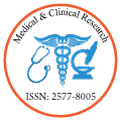Cystinosis in a routine ophthalmologic evaluation
Author(s):
Jorge Alberto Amorim Oliveira, Rodrigo Jorge Amorim, Mariana Xavier Araujo de Oliveira, Juliane de Carvalho Rocha Moura, Mateus Conciani, Thassia Kauany Feitosa da Silva, Thales Antonio Abra de Paula
Introduction: Cystinosis is a rare autosomal recessive metabolic disease. It occurs due to a chromosomal mutation that allows the accumulation of this amino acid in lysosomes. Cystine can form crystals in various tissues such as the kidneys, pancreas, thyroid, testicles, bone marrow, brain, eye, and muscles. In the eyes, crystals can cause deposits on the cornea and conjunctiva. In the cornea, deposits occur in the periphery and anterior stroma. As the disease progresses, the crystals move centripetally and posteriorly. Oral and topical treatments with cysteamine have been described. The ophthalmologic solution of cysteamine 0.55% used continuously every 2 hours has shown good results.
Clinical Case: Patient in a routine ophthalmologic exam, with findings of cystine crystals in the cornea and past kidney transplantation without diagnosis.
Discussion: The patient’s past history is relevant and corroborates with the ophthalmological findings. The patient had severe kidney disease, requiring kidney transplantation, but the disease was not elucidated. Therefore, the ophthalmological examination was fundamental for the diagnosis of the case



